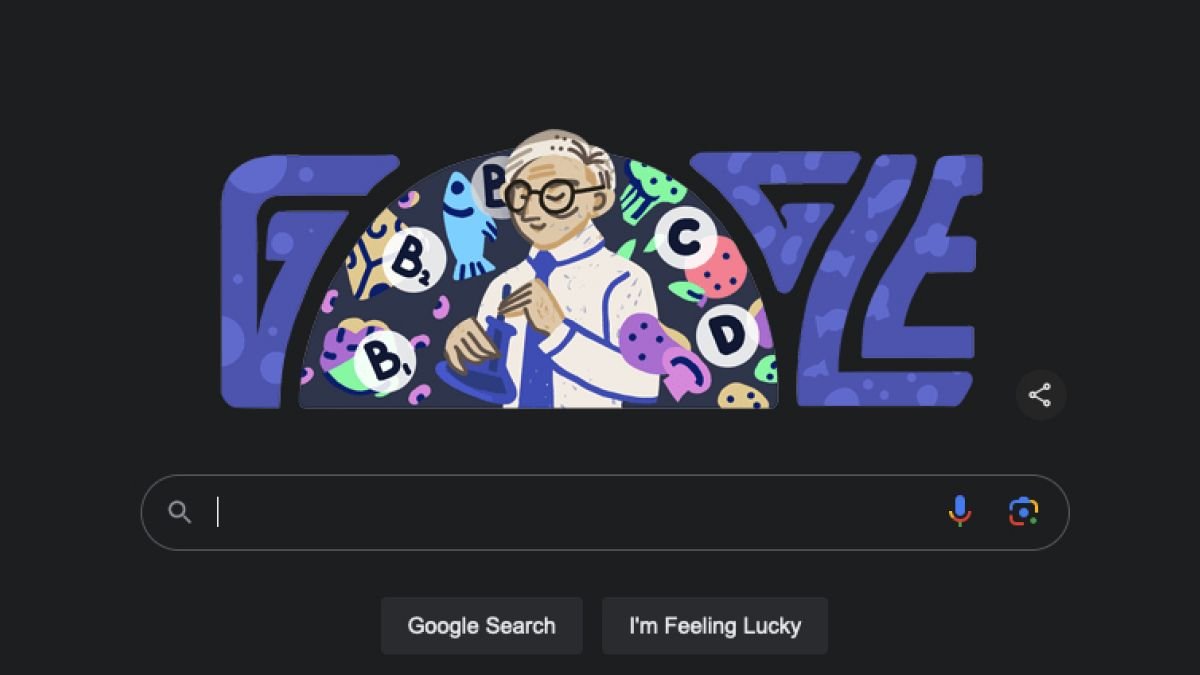The Polish-born biological scientist may not have won a Nobel Prize for his work, but the man known as the “father of vitamins” will be honored on his 140th birthday. became.
Polish-American biochemist Casimir Funk, who was born 140 years ago on Friday and was “one of the first to discover and introduce the concept of vitamins,” Google home page doodle.
Funk grew up in Warsaw, Poland, and earned a PhD in organic chemistry from the University of Bern in Switzerland at just 20 years old.
When the biochemist developed his idea for vitamins in 1911, he was studying the effects of food components on diseases such as scurvy caused by severe vitamin C deficiency.
Where do vitamins come from?
The relationship between food and health was already established by the 18th century. Scottish naval surgeon James Lind demonstrated in 1747 that citrus fruits could prevent scurvy, but no specific nutrients had been identified at the time.
In the late 1890s, Dutch physician Christian Eikman linked poor diet to thiamine deficiency. Thiamine deficiency affects the nervous system and in severe cases is a disease called beriberi.
Between 1928 and 1967, six Nobel Prizes in Chemistry and five Nobel Prizes in Physiology were awarded to scientists for their research on vitamins, including Aikman in 1929.
Funk never won a Nobel Prize, but his research, based on the Dutch doctor’s discoveries, led him to convert vitamin B1 (the first supplement discovered in 1910) into small crystals in 1911 to make the vitamin brought to the masses.
Additionally, funk is credited with being the origin of the word vitamin, coined in 1912 from the terms “vital” and “amine.” This word is a versatile molecule that has a variety of roles, including maintaining our health.
Some vitamins discovered later turned out not to be amines, but the name stuck and over time the -e was lost and it became a vitamin.
“When we chose the name ‘vitamin,’ we were aware that these substances might later turn out not to have amine properties. But we thought it sounded good and would work as a catchword. “A name had to be chosen,” Funk wrote in his 1922 book Die Vitamine, “and by then he had no doubts about the importance and future popularity of this new field.”
In the years following his book’s publication, scientists around the world discovered 13 vitamins by 1948, and by 1935 commercial tablets were available.
From life-saving molecules to supplements
Vitamins were first identified to treat diseases spread by poor nutrition, but today they are used to maintain healthy skin, hair, and eyes, support metabolism, and aid blood clotting. Masu.
Funk immigrated to the United States in 1915 and became a naturalized citizen in 1920, where he died in 1967.
Since 1998, Google has used a temporary logo called Doodles on its homepage. to celebrate achievements and people. Hundreds of doodles appear every year.
Celebrating funk, the Google Doodle features a biochemist holding an Erlenmeyer flask surrounded by nutritious foods such as fish, oranges, mushrooms, and broccoli with the letters B1, B2, C, and D floating around them.
This is the first time the Casimir Funk Doodle has been published, giving Google users in Western Europe and North America a glimpse of the temporary homepage celebrating the biochemist.

